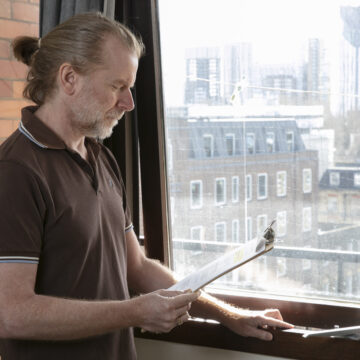
You may have received a notification that there will be a Fire Risk Assessment (or FRA) in your block, and now you’re wondering what exactly that involves.
A Fire Risk Assessment is exactly what it sounds like: a look at your building and the people who live in it, and an evaluation of the potential fire risks so that, if needed, changes can be made to make your tower block safer.
The relevant law is the Regulatory Reform (Fire Safety) Order 2005.
In these countries, regular fire risk assessments are a legal requirement, and the local Fire Brigade make inspections to ensure they are in place. If fire risk assessments are not conducted, the person responsible for your building can be fined or sent to prison.
There must be someone designated as the Responsible Person for fire safety in your block (usually the owner or landlord.)
If they’ve had the required training, the Responsible Person might conduct the fire risk assessments themselves, or they might employ someone to do it for them. This is a highly skilled role and requires knowledge of legislation, building regulations, codes of practice, knowledge of construction techniques, materials and fire safety. They require insurance and knowledge of Health and Safety legislation.
A fire risk assessment should:
The assessments should be renewed every 12 months, with a completely new one conducted at least every five years, or whenever any aspect of the building has changed (eg an extension has been built or there’s been a change in layout).
If there are more than five residents in your block, it’s a legal requirement that the fire risk assessment is written down — it’s not enough for it just to be carried out. In fact, most fire brigades recommend that it is written down even if there are fewer than five tenants in the building.
There is no legal obligation to carry out fire safety risk assessments, but it is highly recommended by the Scottish government guidance that landlords do so.
If you are worried that regular fire risk assessments are not being conducted for your building, you can take these steps:
Contact your landlord, managing agent, or Residents’ Association to find out who the Responsible Person is.
If there is no Responsible Person in place: notify them that this is a requirement as set out in the Fire Safety Regulatory Reform Order. You can send them this link to the relevant law.
If there is a Responsible Person, ask them when the last fire risk assessment was carried out, and where it may be seen.
If they share it, you might like to suggest that it is also shared with the other tenants, for example on a noticeboard or website.
If no fire risk assessment has been conducted, point out that it is a legal duty (in England and Wales) under the Regulatory Reform (Fire Safety) Order 2005. In Scotland you can say that it is highly recommended by government guidance.
You may also wish to contact your local fire brigade, who are responsible for enforcing that assessments are conducted. They will make an inspection — usually by arrangement with the landlord or building’s owner, but sometimes unannounced.
If you have pointed out the need for a Responsible Person and one has still not been appointed you can also report this to your local fire brigade.
If you are worried about your landlord’s approach to fire safety, joining or setting up a Residents’ Action group might be a good start, so you can discuss together what is needed and then approach your landlord as a group.


Guide


Tools you can use


Tools you can use


Guide


Reference